COVID-19: Simprints Contactless Biometrics
Description
In high-income countries, reliable government IDs underpin disease surveillance and the response to COVID-19\. However, more than 1 billion people worldwide—including those in LMIC lack formal identification. These people are less likely to be able to access health services, less likely to know their disease status, and, ultimately, more likely to pass the disease to others.
Simprints´ biometric solution solves this challenge in the context of contact tracing, testing and case management for COVID-19.
From testing to discharge, suspected cases require multiple touch points with the health system and resources need to be carefully prioritized among confirmed cases. Without a unique identifier, time may be wasted searching for patient records, patients may fail to receive their test results, and lives may be lost from compromised quality of care.
Simprints’ contactless biometric identification enables accurate enrollment and identification of patients. This can facilitate high quality data collection on the number of new and suspected cases and can be rapidly deployed and scaled on low cost Android devices.
Workflow is designed on WHO (FFX) Protocols for contact tracing and case management and is interoperable with all major open source data collection platforms such as CommCare, Open SRP or DHIS2.
Tool Specification
Focus areas:
- Case management & Contact Tracing
- Continuum of Care & Testing Tracking
- Data collection & Analytics
- Verification of coverage
- Simprints´ biometric solution is a desirable technology in the context of contact tracing and case management for COVID-19. Accurate identification will support effective response by ensuring that patients are correctly linked with their records, and that their records can be linked longitudinally. While case ID numbers can identify records, data entry errors are common, and there is no link between case ID numbers and the people to whom they belong. Without a way to uniquely link people with their records, duplicate records may be generated, and contacts or patient history may be lost.
- Finally, by providing information on the unique number of patients tested and treated, Simprints will be able to verify coverage of the COVID response programm and contribute to the robustness of the data gathered.
- Currently there are three institutions that uses Simprints' contactless biometric solution; in Kenya, Madagascar and Tanzania.
- The firm is also in discussion with multiple organizations in Bangladesh and Ethiopia for deployment of our contactless solution for direct COVID-19 response.
- The number of users per institution varies and reflects the flexibility of Simprints contactless solution. Since no additional hardware is required, the solution can scale and de-scale rapidly according to the project´s needs.
- The firm is equally keen to work with organisations who want to pilot a solution for 20 users, as they are to deploy in a project of 200+ users.
- The business model is reflective of Simprints´ Non-for Profit status.
- Their tool is designed to be a low cost solution for the LMIC and suitable for the last mile setting. The cost of the deployment is estimated based on the complexity, number of users and the duration of the project and incurs two types of costs: 1. Software and 2. Services.
- Software costs include all the backend infrastructure, hosting as well integration with data collection platforms. Expenditure for services include training, project management, data analytics and technical support.
- Public
- Private
- Simprints offer full training on their technology, both in person and remotely. They assist with the workflow design as well as integration into data collection platforms.
- During the project, they provide dedicated Project Manger, responsible for ongoing capacity building and technical support. They also support their partners in M&E activities through their data analytics.
- Shorter than 2 months
Simprints consists of two main components: 1) a mobile application and 2) the cloud backend.
1) Mobile Application
- Simprints' mobile application is integrated into a data collection application to provide enrollment, identification and verification services for a specified program. During the set up stage, they work with their partners to configure the project based on the project's requirements. Several aspects of the program that they configure are: language of consent, translations of the app, quality of scanning for the images, the villages that data will be collected in, frequency of sync, etc. Once they are live with a project, the Simprints mobile app can be remotely changed for many of these configurations without any need to release a new app update.
2) Cloud Backend
- On the backend, Simprints have great flexibility as it is uncoupled from the Simprints ID application. The app is hosted on Google Cloud, and users can choose a hosting location prior to the deployment.
In terms of resources, there is no set up or hardware costs up front and the project only incurs variable costs such as software and services. The software costs are estimated based on the number users and on the complexity of the workflow. Additionally based on the amount and velocity of the data collected the costs of cloud hosting will be estimated. The costs of services are estimated based on the time and FTE´s required for training and capacity building.
- Simprints´ contactless biometric tool is a plug-in to open source data collection tools such as CommCare, Medic Mobile, Open SRP or DHIS2 (used in health and aid programs worldwide). Contactless biometrics is an extension of the data collection platform, which allows for seamless enrollment, identification and verification of individuals via their biometric template.
- The user sees the biometric identification component as a part of the data collection workflow. Simprints helps programs link and identify beneficiaries uniquely by associating their biometric template to a 'Globally Unique Identifier' (GUID) number. This GUID enables the users to consistently link beneficiaries to their digital records.
- Since biometric templates are considered special category sensitive data under GDPR, Simprints does not share it with any other information systems. Information from our tool which can be shared however are the timestamp and the geo location of the biometric transaction. This data is available for users to extract and incorporate into their program analytics. It has a potential to be extremely useful for disease spread monitoring and contact tracing intervention in the light of COVID-19 pandemic. We are currently in discussions with several national health ministries in the LMIC to deploy this technology to underpin data driven decision making for their interventions.
- They do not currently offer trial periods, however, small scale pilot projects are feasible.
Quotes from global health experts around the need for biometrics in the COVID-19 response in low-income countries:
- “Without reliable IDs, it’s difficult to know who has received vaccines. Furthermore, the initial Covid-19 vaccine supply will be limited, so it will be essential to verify each dose reaches a real patient. Corruption, leakage, and even accidental duplication waste precious supply and are deadly. To address this problem, biometric digital IDs can be a game changer. For example, Simprints has deployed biometric IDs on health and humanitarian projects across 12 countries, which have increased health care visits and quality while preventing fraud.” - Seth Berkley, CEO of Gavi (HBR)
- “Biometric digital IDs can be a gamechanger. They can help governments target population segments e.g. healthcare professionals or elderly population, verify people who have received vaccination, and have a clear record,” - Prashant Yadav, Professor at Insead, Former Supply Chain lead at Gates Foundation (Reuters)
- “Over the past few years, biometrics and digital identity have become a game-changer, overcoming the barriers to distributing official identification (ID) nationwide and opening the way to digital service delivery as a key development tool [...] We believe that the existence of a robust ID system in each of the three most affected countries — Guinea, Liberia, Sierra Leone — would have allowed donors and governments of these countries to precisely identify the people infected with Ebola, track their contacts (thus containing the spread of the virus), closely monitor treatments received by the Ebola patients and make sure payments reach the health workers who were caring for them” - Mariana Dahan, World Bank (WBB)
- Simprints´ Contactless biometrics is an extension of the data collection platform, which allows for seamless enrollment, identification and verification of individuals via their biometric template. The inherent advantage of biometrics is that it is based on unique, immutable characteristics that cannot be lost, forgotten, stolen, or duplicated
- The tool can be safely used from a 1m distance, with no physical contact required between a health worker and patient.
- Tool uses machine learning matching algorithms which are able to work offline and on low cost Android devices
- Tool also collect geolocation and timestamp for each biometric transaction. This data is available for users to extract and incorporate into their program analytics
- Proprietary
- English
- Other
Privacy and Confidentiality standards
- Simprints' approach to data privacy and security is 3-fold.
- First, as a legal baseline they adhere to Europe’s General Data Protection Regulation (GDPR), which categorises biometric data as “special category data” and requires companies to have both a lawful base and an additional condition for processing biometrics.
- In projects where they are data controllers, they rely on consent as our lawful base and explicit, informed consent as the additional condition for the processing of biometric data. As such, they can only use the data for the purposes that the individual agrees to.
- In projects where they are data processors, they advise their partners on individual privacy rights and encourage the use of GDPR-compliant consent processes.
- Second, they practice a range of activities to ensure they are keeping individuals’ privacy and security at the center of their operations.
- For projects where they are data controllers, they conduct extensive Data Protection Impact Assessments (DPIAs) that describe the likelihood and severity of risks as well as mitigation strategies (see here for our project in Malawi).
- Where they are data processors, they still perform due diligence assessments to evaluate risks before agreeing to act as a data processor. Their consent protocols are context-specific and developed in close collaboration with our partners. They consider literacy levels and cultural understandings of privacy, using simple terms in local languages. To avoid burdening users and beneficiaries alike, they start with a short consent text that covers the essential information needed to make an informed decision—what data is being processed, by whom, and for what purpose—and affirm the individual’s right to decline and withdraw consent. More detailed information is included in a comprehensive privacy notice, which is read aloud or made available to the individual upon request.
- For security of processing, they use SSL/TLS encryption between the phone and the cloud platform we use. For secure storage, they practice "data siloing", limiting the impact of a potential cyber breach of Simprints’ systems. Simprints only stores and processes the biometric data, but not the personal data (e.g. health data, attendance data, name) that is linked to each individual for the purposes of the project. Conversely, their project partners store and process the personal data that needs to be linked with each individual for the purposes of the project, but not the biometric data. Randomly-generated globally-unique IDs (GUIDs) are used as the bridge between the two siloed data sets, allowing Simprints to identify individuals for the project partner. Thus only by breaching both Simprints’ and their partner’s databases would hackers be able to create full personal identities of individuals.
- Third, they advocate that any global development organisation should voluntarily try to adhere to the GDPR, or similarly-strong, framework and extend privacy and security principles to their operations. They have been advocating for upholding these rights since 2016, most recently being featured on leading industry and media outlets such as CNBC Africa, Reuters, DAI Global, One World Identity, and article "Small Company, Big Ethics" published in Privacy, Law, and Business.
Data Standards/ Interoperability
- In order to achieve both biometric data interoperability and platform interoperability, Simprints today uses open template standards (ISO 19794-2) to prevent vendor lock-in and have developed basic integrations with many of the most widely-used digital systems, including DHIS2, CommCare, Open SRP and SurveyCTO. This past experience positions Simprints ahead of competitors in developing further platform integrations that support interoperability on the platform front. On the biometric data front, this includes developing image transfer to preserve raw images captured by the facial recognition app.
- Simprints is committed to global goods approaches, including creating new goods where gaps exist. As the only actor (that we know of) that purposefully operates across, and thereby links, medical interoperability standards (e.g. OpenHIE) and digital ID interoperability standards and frameworks (e.g. the World Bank ID4D Technical Standards), they are in a unique position to develop open protocols for digital identity for global health. For example, the Ethiopian FMoH has asked Simprints for documentation of our findings and processes, in order to create a best practices guide for their own staff.
- Other
Rating and Comments
Multimedia
- Simprints Technology
- Simprints

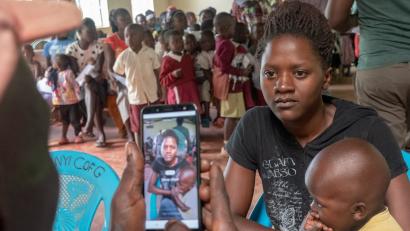
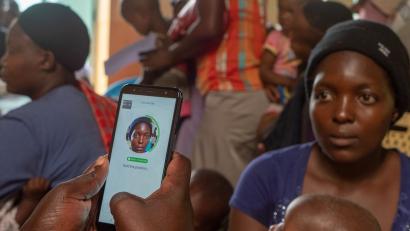
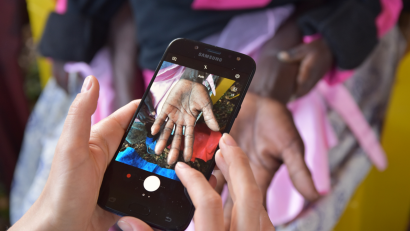
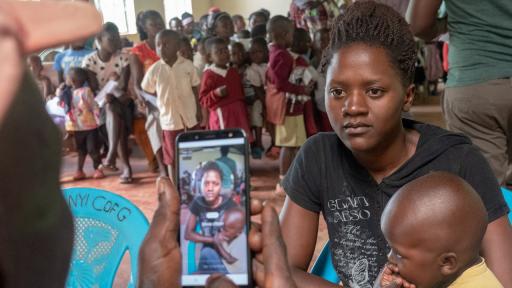
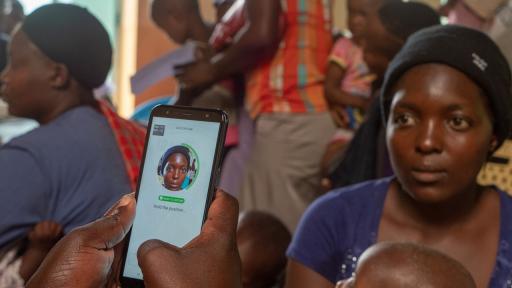
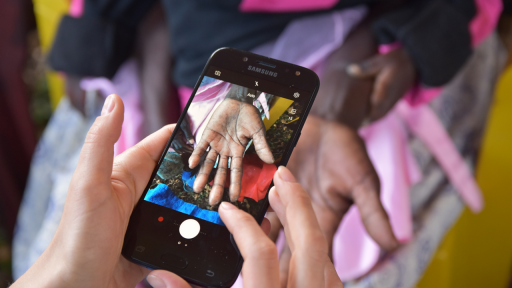
Leave a rating